|
|
Post by alexander on Feb 11, 2016 7:25:39 GMT
Meanwhile, I mounted the lantern. The flag I made of relief foil, which was fairly easy. The relief foil I primed with Tamiya Primer. With the airbrush I sprayed the Swedish flag and fixed it with a matte clearcoat. Then I oversprayed the bright colors with a little bit white color from above. So the convolution effect became more plastic. The flagstaff is fixed provisionally. Because of its risk of fracture it will be fixed just before the model moves into the display case. 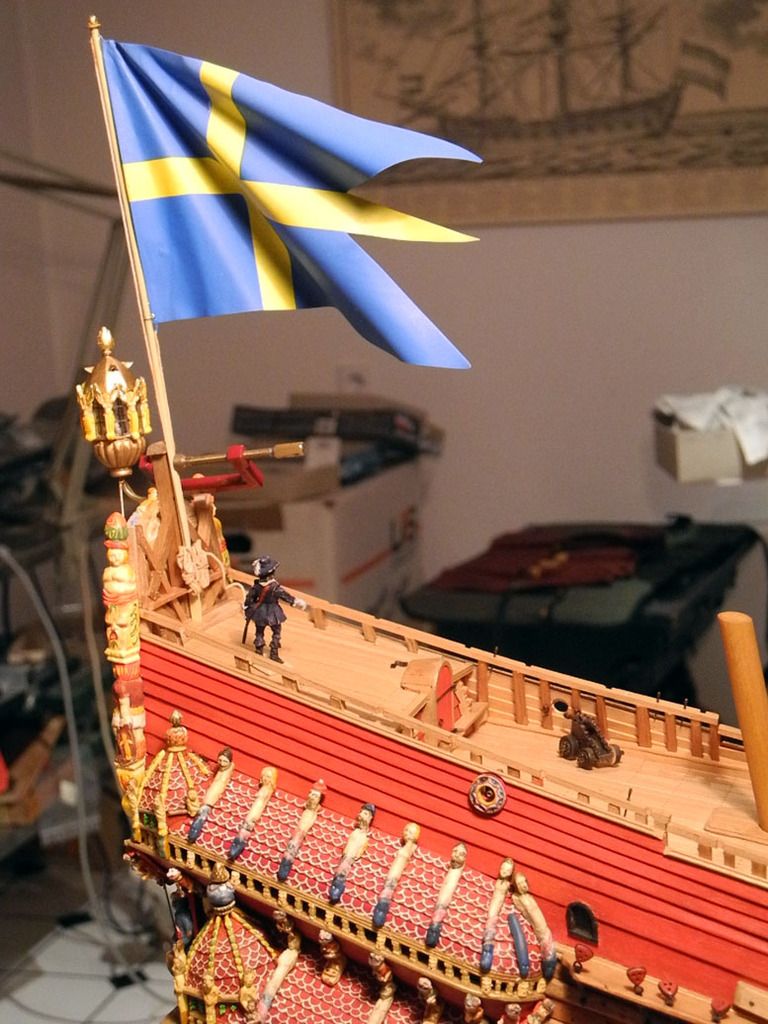 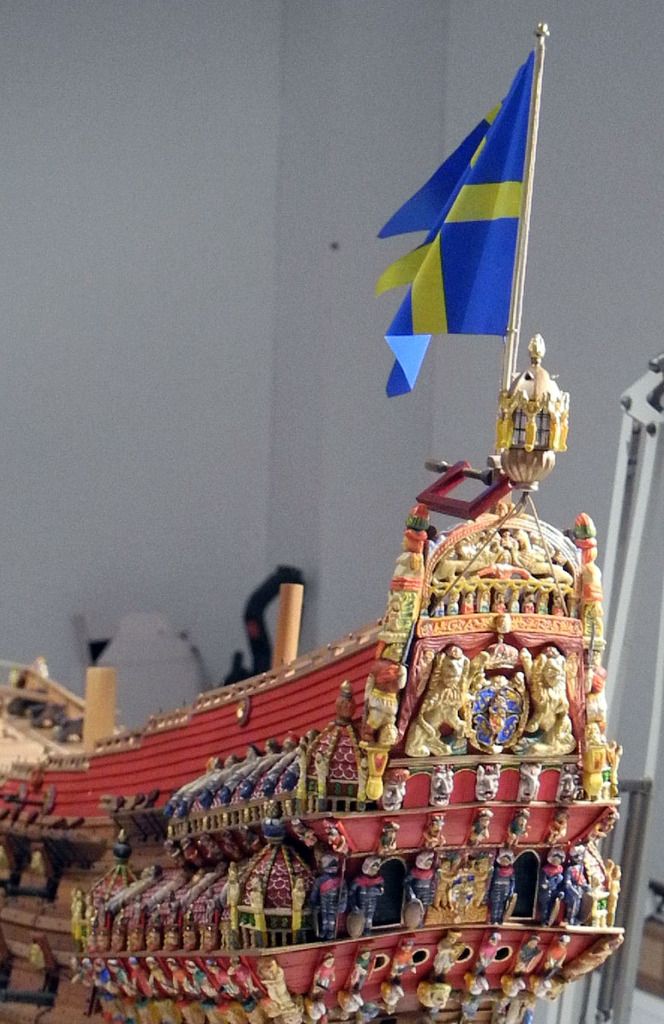 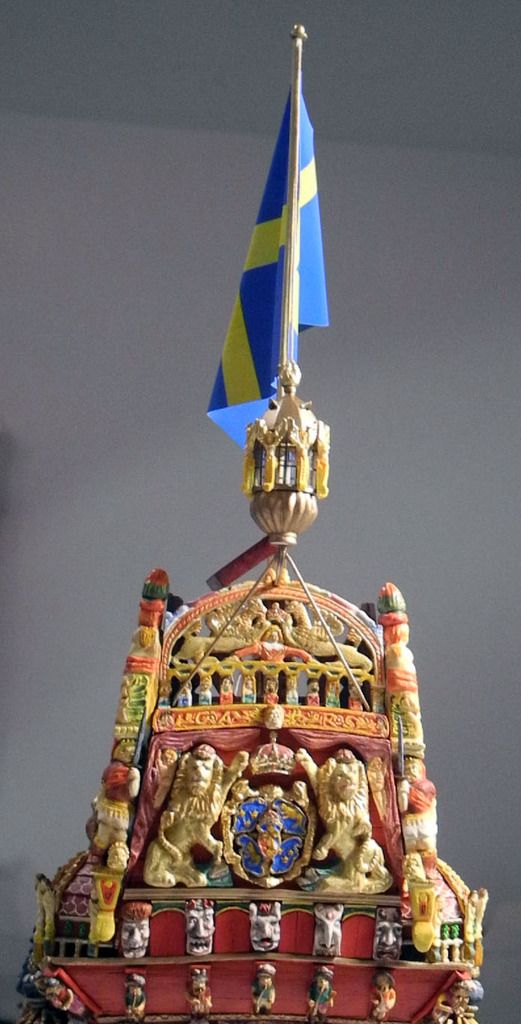 Greetings, Alexander |
|
|
|
Post by fredhocker on Feb 11, 2016 9:10:19 GMT
The flag looks very realistic, with the folds and shading, and the colors look good. The original for maximum ceremonial occasions,would be considerably bigger, according to inventories, about 24 ells (14 m) long. Your flag looks the right size for the one the ship would carry when under way in normal service.
Fred
|
|
|
|
Post by alexander on Feb 11, 2016 10:28:07 GMT
Thanks Fred!
I enlarged the length of the flag compared to the Landström's drawings a little bit.
Such a ceremonial flag must be really huge and would easily get in conflicts with the lantern.
Cheers, Alexander
|
|
|
|
Post by alexander on Mar 4, 2016 16:09:05 GMT
Currently I am working for a support for the model. From plasticine I formed a kind of snake, as they can also be found on the gallery roofs of Vasa.  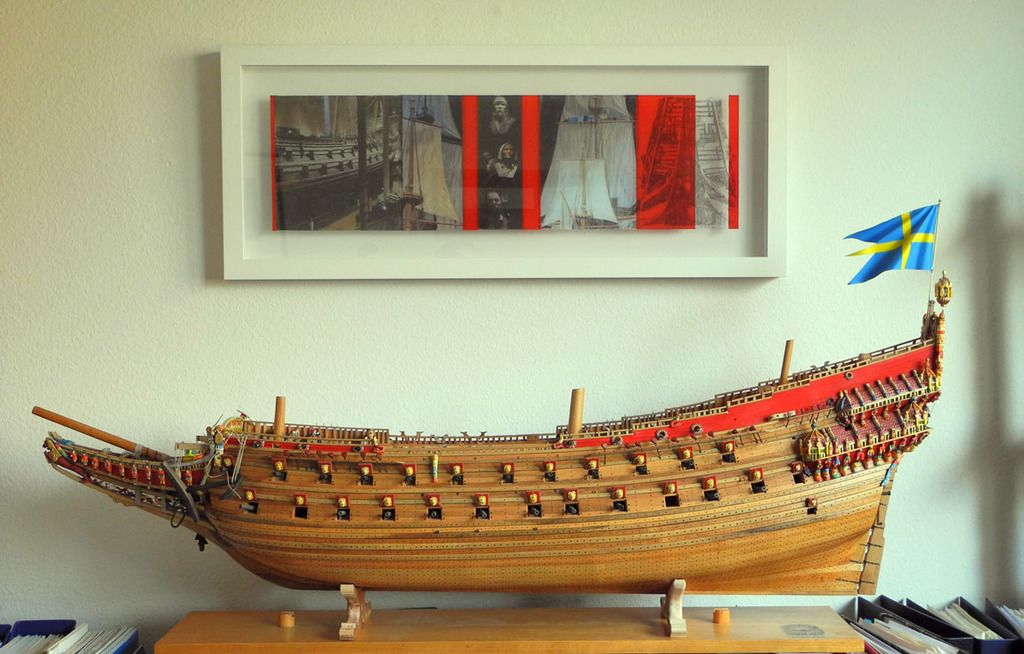 Cut out with a band saw and then trimmed them roughly with carving knives, you see the result of the reference sample in the picture below. The result looks down on the stern. The support should be actually moved further backwards. But that would also mean that I have to start all over again. What do you think? Cheers, Alexander |
|
|
|
Post by fredhocker on Mar 16, 2016 15:14:16 GMT
Alexander, the after end of the keel should be two scale feet (60 cm) lower than the forward end when the ship is afloat, according to the inquest. Your model looks about right, but you can always measure!
Fred
|
|
|
|
Post by alexander on Mar 23, 2016 13:52:25 GMT
Meanwhile, I finished carving the two stands. Is nothing particularly fancy. However, the final coat of paint is still missing. 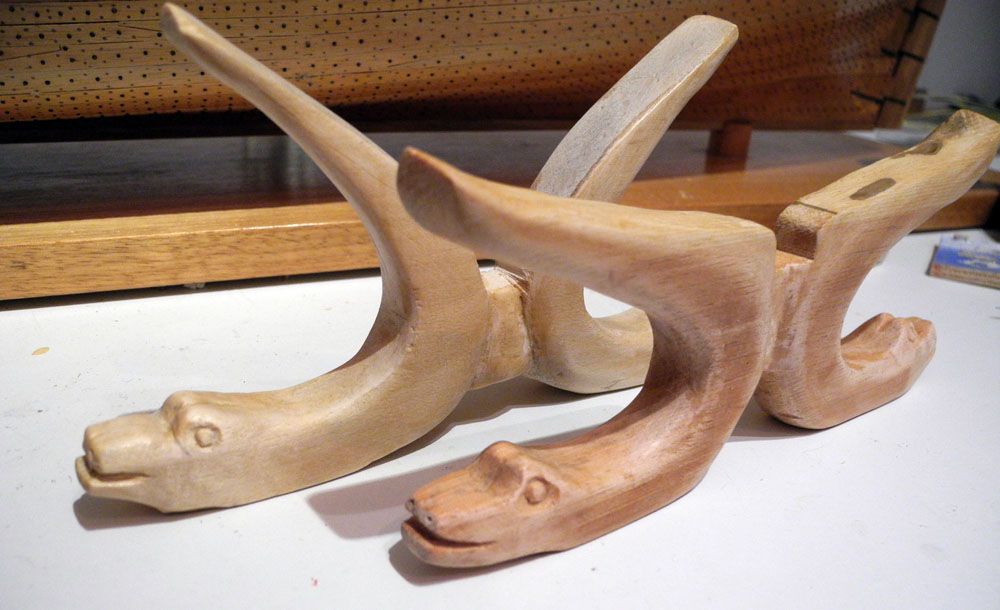 During trying the fit of the stands to the shape of the hull, the model slipped off my hands and almost rolled from the table. Only a courageous grip could prevent all falls to the ground. Ultimately, however, I've torn only a port-lid and a cannon. This can be repaired easily. I really had luck. The profiles for the upper fife rail I have already prepared last year. These are 2.4 mm profiles, which I made with a profile-plane and had then partially formed at the ends with the aid of ammonia. There were some damage, so I had to make a whole series shapeing again. The bonding is quite difficult and is made with epoxy adhesive. White glue does not have enough force to the small bonding site, which is also painted. The profile is painted with a sand color (Humbrol flat). This is slightly different from that proposed by the Vasa Museum. 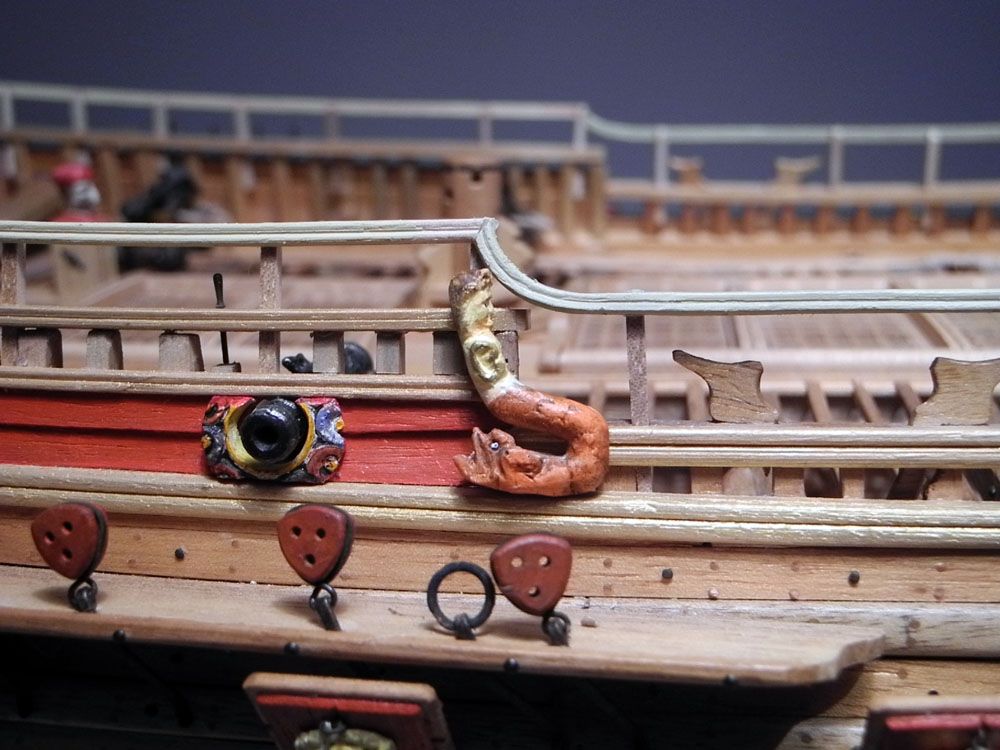 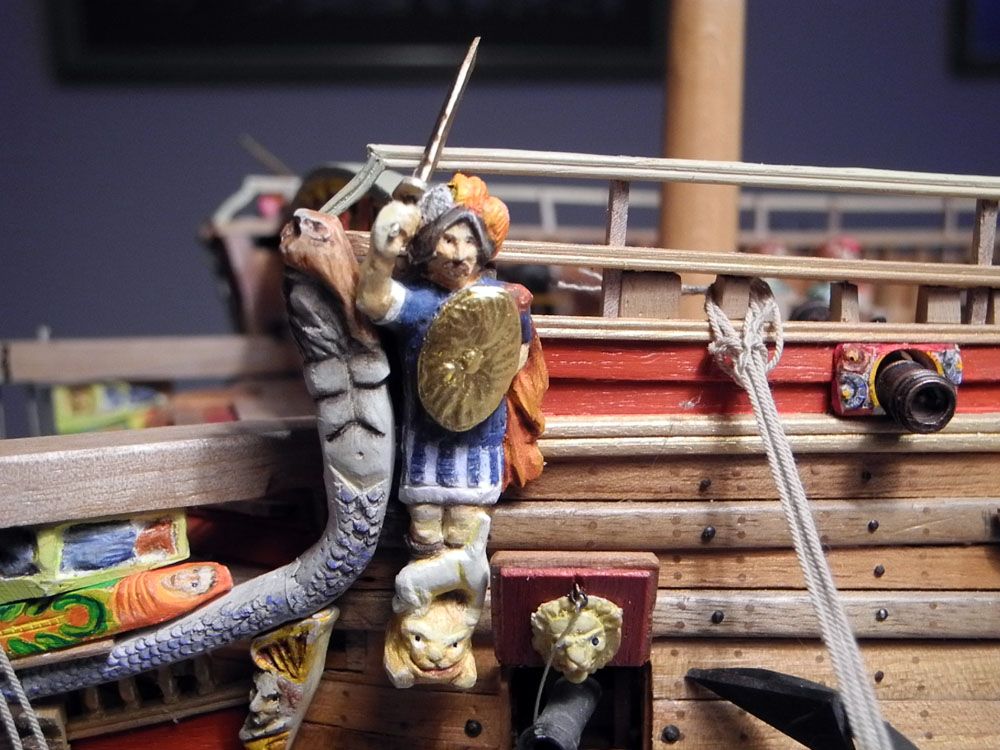 Greetings, Alexander |
|
|
|
Post by fredhocker on Mar 29, 2016 7:10:31 GMT
Hi Alexander,
Your fiferails look very good, and the color is not far off the remains we have found on the originals, which is a pale yellow/buff.
Fred
|
|
|
|
Post by alexander on Mar 29, 2016 11:17:55 GMT
Thanks Fred!
That's good to hear!
It's hard to believe that on such thin and exposed parts rests of color resisted.
Alexander
|
|
|
|
Post by fredhocker on Mar 30, 2016 7:07:17 GMT
We find a lot of paint down in the crevices, and since the fiferails have a deeply moulded profile, there is plenty of space for paint to get trapped and preserved. Flat surfaces do not do so well.
Fred
|
|
|
|
Post by Clayton on Apr 2, 2016 2:22:03 GMT
Very nice flag! I am with Fred, and think it looks very realistic, and nicer than mine.
I really like your model stands too!
Clayton
|
|
|
|
Post by alexander on Apr 3, 2016 9:07:34 GMT
Thanks, Clayton but your model looks to me as the real thing! Built properly, every figure carved individually. Folks, it's coming to an end. The railing is now complete. According to Murphy - laws everything went wrong what can go wrong. But I am satisfied with the result. The rail gaps I prepared years ago, prove to be properly in size and angle of the stanchions. The bonding with epoxy-glue was lengthy because 10 hours work pause was required after each bonding process. During such a break I realized a fantasy of Landström: A staircase, which is removable. Don't know if it was at the real Vasa but maybe, Fred knows more. 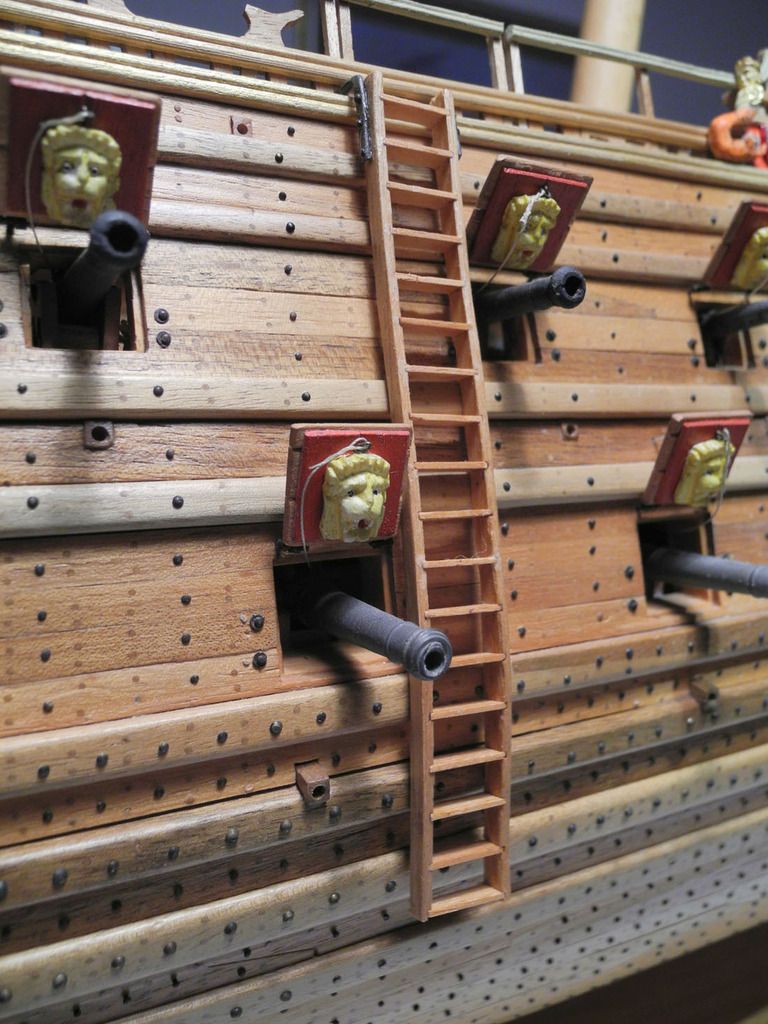 The railings links designed as Tritions were attached to the railing. 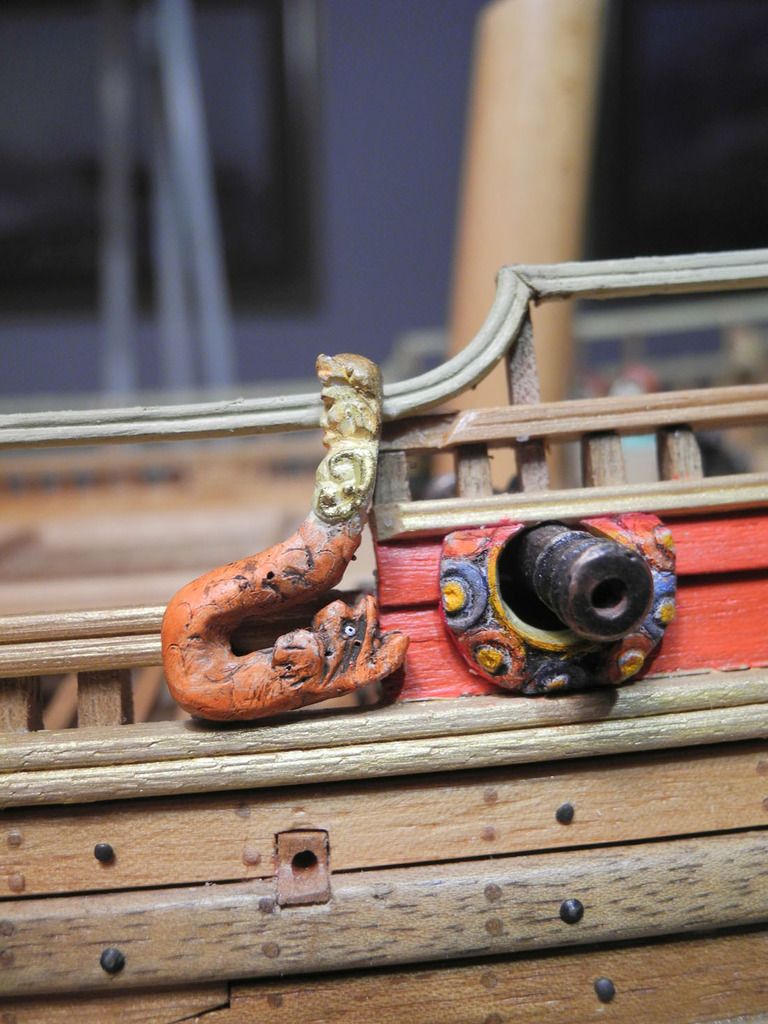  The starboard anchor was tied ap to the fish-davit. 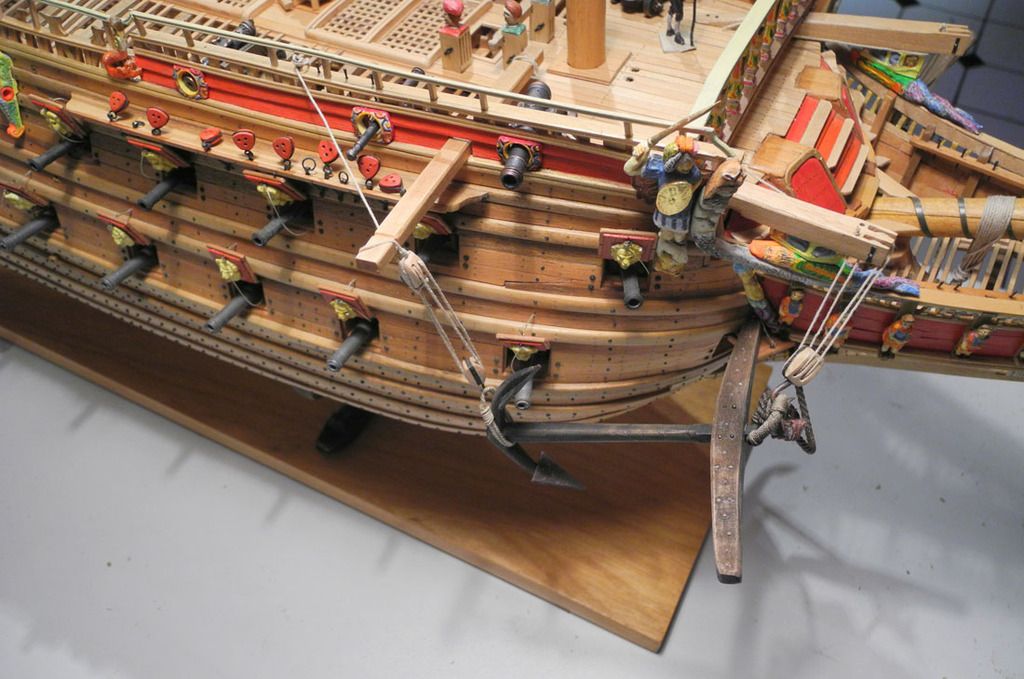 A look at the guns of the upper deck, which Clayton has generously casted for me: 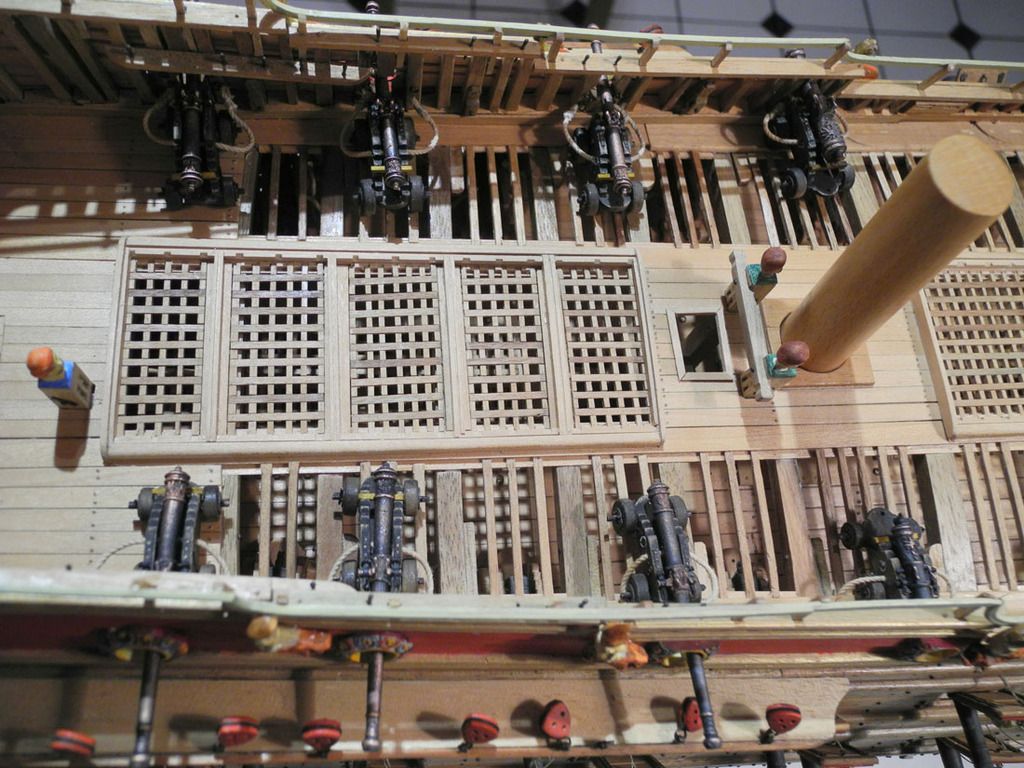  A few more views of the whole and for some 30 years in making the model. I'm almost finished.   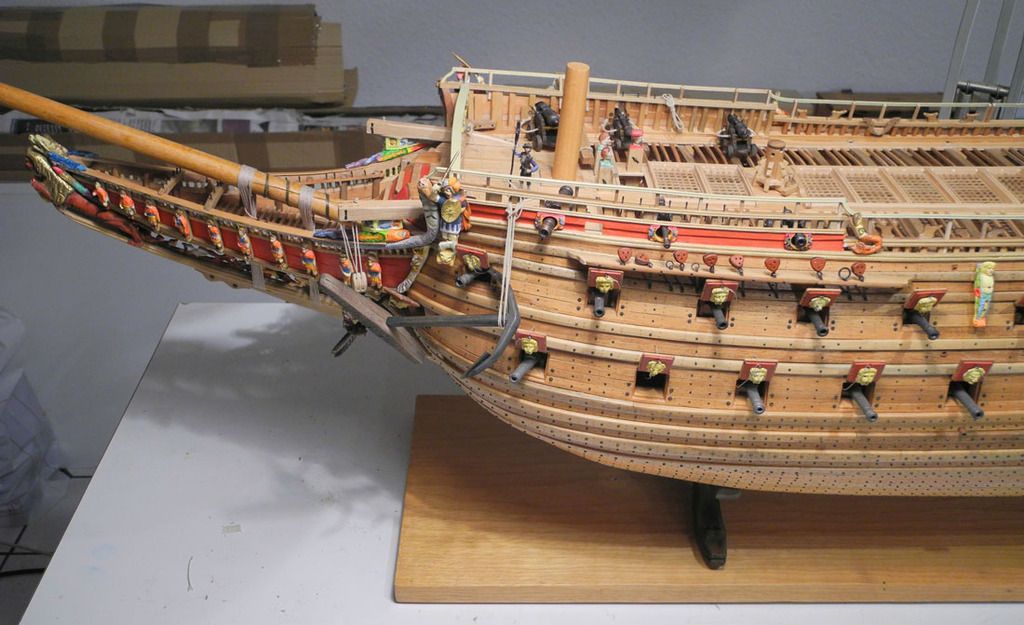 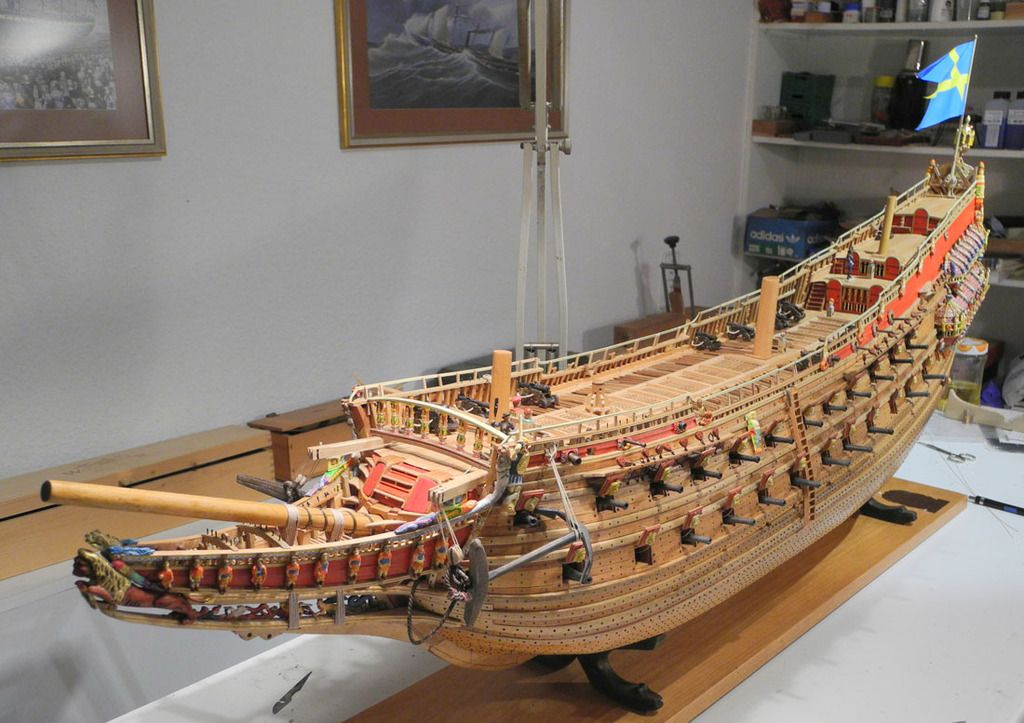 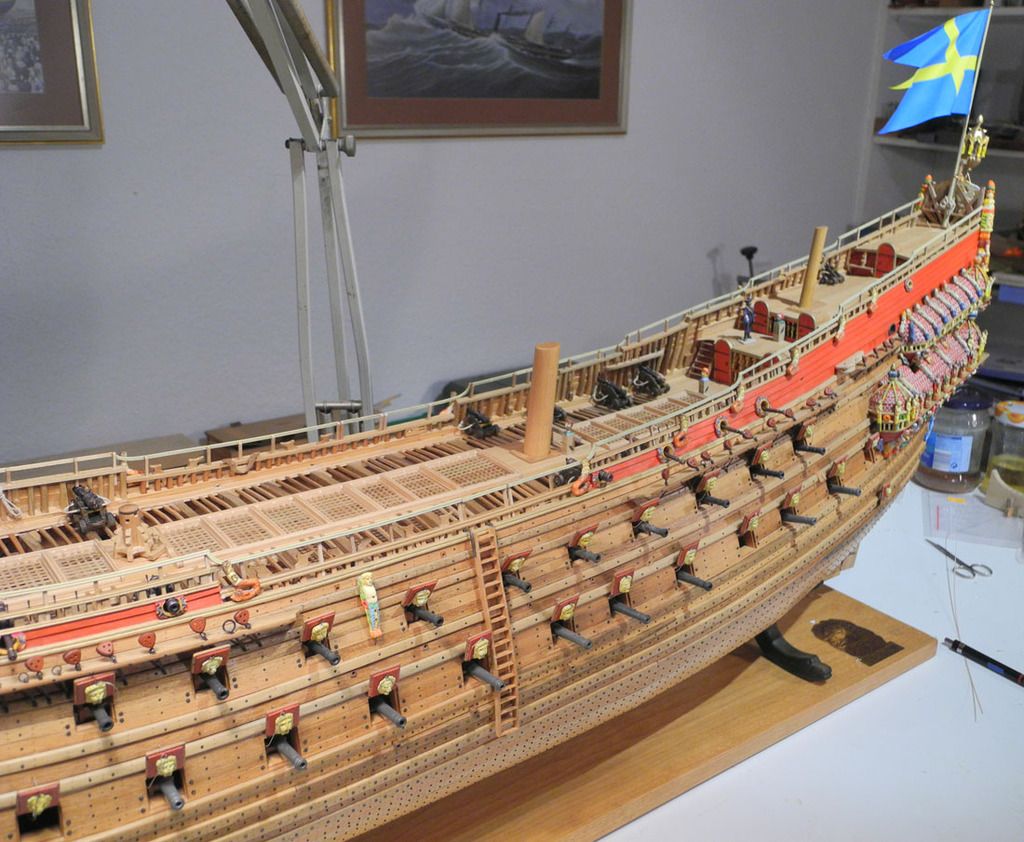 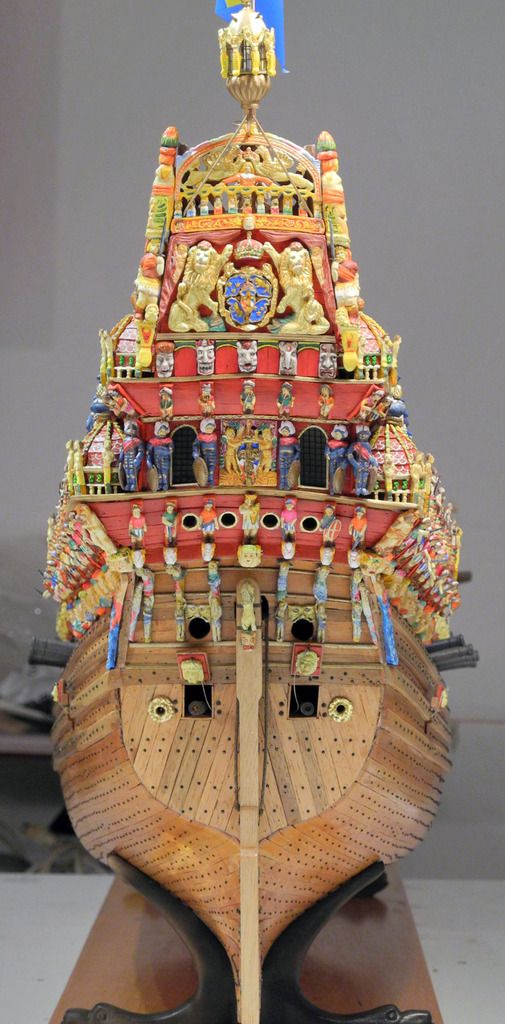 I thank all who have followed the building report and have stood by me in word and deed. Specifically Robert Volk and Clayton Johnson and of course from the Vasa Museum: Fred Hocker and Hans Soop of which I have received a lot of support - Thank you!  @ Fred: Do you have a mail adress of Hans Soop and can you pass it to me? I would like to contact him after long time. Greetings, Alexander |
|
|
|
Post by vladfs on Apr 3, 2016 10:15:13 GMT
Alexander, congratulations! Very nicely done and very inspirational!
Vlad. |
|
|
|
Post by fredhocker on Apr 4, 2016 6:34:38 GMT
Very nice indeed!
I will look up Hans's current address and forward it to you.
Fred
|
|
|
|
Post by alexander on Apr 4, 2016 7:32:58 GMT
Thanks Vladimir and Fred
Cheers, Alexander
|
|
|
|
Post by Clayton on Apr 4, 2016 13:17:50 GMT
Congratulations Alexander! It is a very nice piece of work!
After working on this for 30 years, I think you deserve a rest!
Clayton
|
|